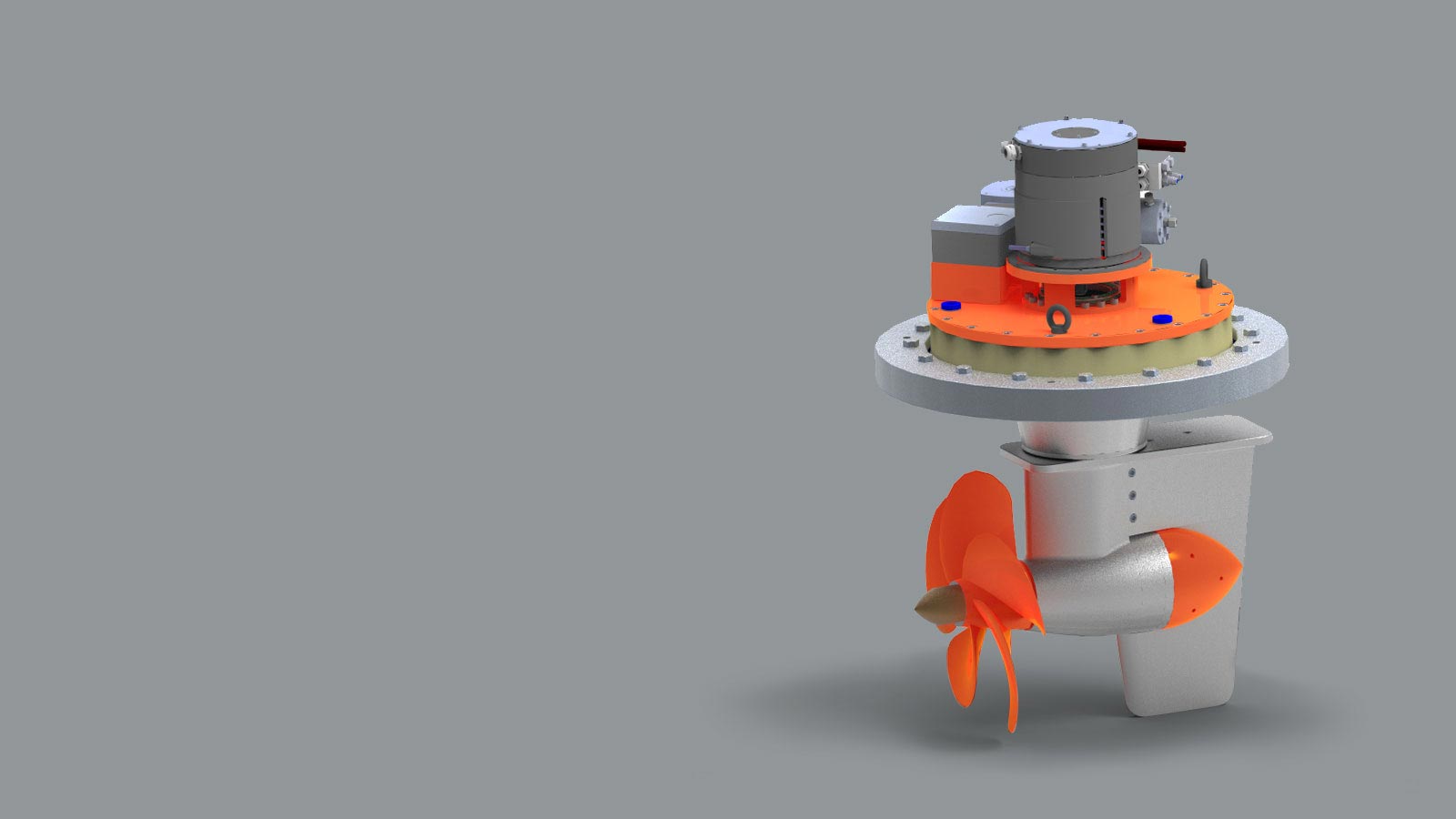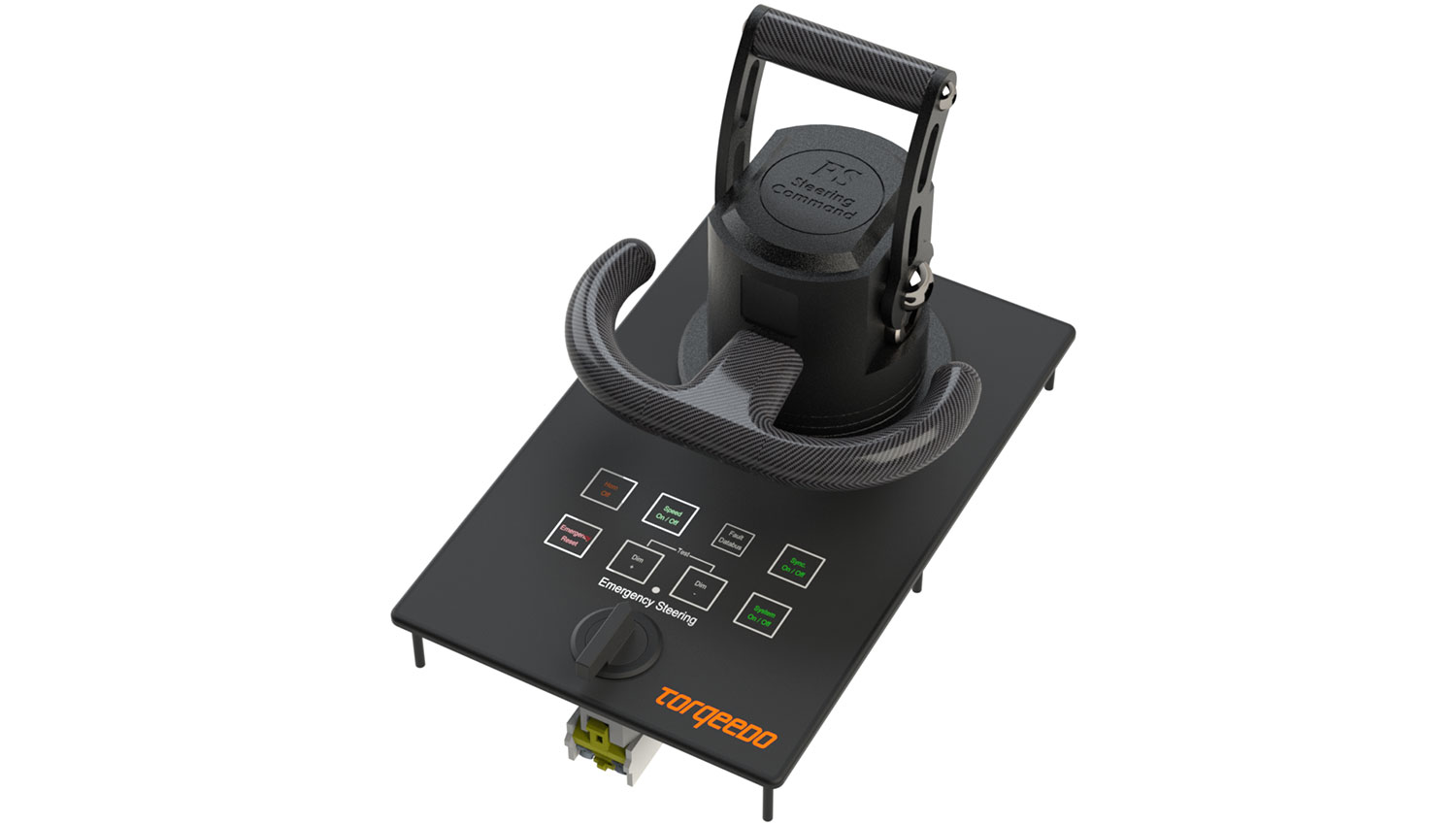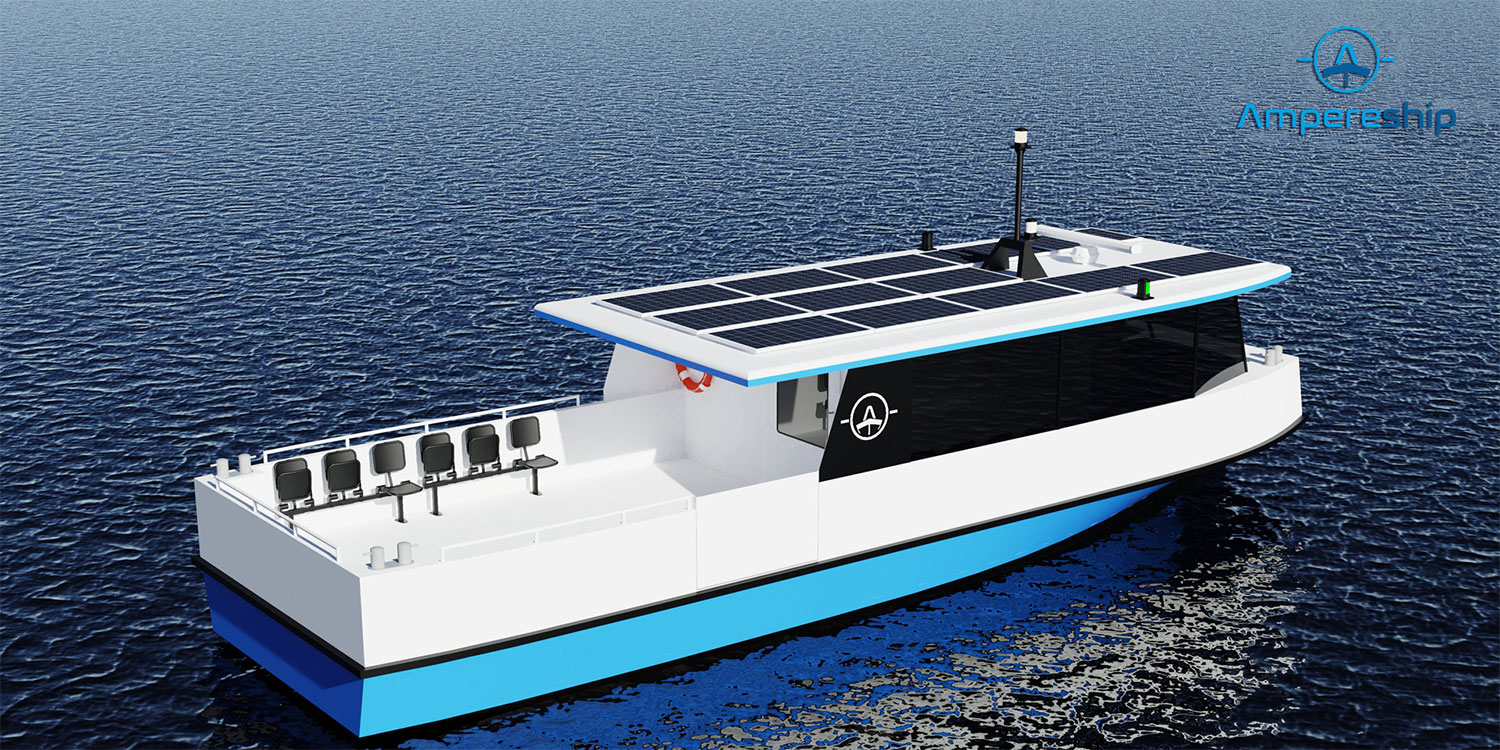


Torqeedo and Poseidon cooperatively announced a fully electric, steerable thruster system designed to provide up to 65 kW of emission-free power and directional thrust ideal for manoeuvring on Europe's inland waterways.
Poseidon’s thruster is integrated into Torqeedo's award-winning and highly efficient Deep Blue drive. The thruster delivers a continuous power of 50 kW and a peak power of 65 kW and can rotate up to 360 degrees. Two drives are a typical configuration for the average 80 to 200-passenger vessel, but up to four may be installed. With service intervals of as long as 25,000 hours and the optimized efficiency of a pulling propeller, the Poseidon thruster integration for Deep Blue will further lower the total cost of ownership for climate-friendly ferries and water taxis.

The electro-hydraulic steering system was developed by FS-Schiffstechnik in Duisburg, Germany. Credit: FS-Schiffstechnik
The system is powered by Deep Blue lithium-ion batteries with a battery bank capacity of 80 kWh to 1 MWh. These high-capacity batteries with technology by BMWi meet IEC 62619 and IEC 62620 requirements, making them suitable for use in inland vessels according to ES-TRIN (European Standard laying down Technical Requirements for Inland Navigation vessels) requirements. A DNV-GL type-approved battery variant is also available for offshore applications.
The electro-hydraulic steering system was developed by FS-Schiffstechnik in Duisburg, Germany, an established supplier of electrical and hydraulic systems for commercial shipping for over 25 years.
The first project with the new Deep Blue thruster is already well underway. Ostseestaal subsidiary Ampereship is building an ES-TRIN certified solar-electric passenger ferry that will travel between the mainland town of Kamp and the island of Usedom in Northern Germany. The sun-powered 14.65 metre-long ferry can transport up to 20 people and 15 bicycles per trip at a cruising speed of 8 km/h, with a max speed of 14 km/h. The new ferry is scheduled to start operations in August 2021.
“There are many commercial applications that can be electrified very economically. Our focus is to keep the total cost of ownership low by offering a solution on a system level, including design-in, service, maintenance and remote diagnostics. This makes electrification as easy and safe as possible for the shipyard and the fleet operator,” explains Phillip Goethe, Director Project Sales.

The solar-electric passenger ferry will travel between the mainland town of Kamp and the island of Usedom in Northern Germany. Credit: Ampereship
Most commercial fleets in European cities are powered by decades-old marine diesel engines. The CO2 emissions are not in line with the international goals to reduce global warming, and human health is also at risk. Our cities' air quality suffers from emissions, particularly due to ferries which dock frequently. An electric drive offers immediate torque without any air or noise pollution.
Electrification of vessels in inner-city waterways with Deep Blue can be accomplished very cost-effectively because speeds are often limited and the vessels are typically in use for 8-14 hours per day, which leaves plenty of time for overnight charging. That reduces infrastructure and battery bank costs and makes the entire investment even more economically and ecologically beneficial. The new thruster drive option adds unbeatable manoeuvrability to the proven Deep Blue system - a critical advantage for inland and urban waterways.
Axel Büchling, manager project sales for Torqeedo, has 24 years of experience in marine electrification and has converted many ferries in Europe to electric drives. “The technology is ready. Up to 200 kW propulsive power is enough to operate most inland passenger vessels. The modular system design allows the operator to use the same parts and components in different vessels and all components can be monitored and serviced remotely. That is a big advantage," Büchling said. Büchling also noted that Torqeedo’s global service network, supported by parent company DEUTZ, can provide optimal support to its customers no matter where they are. To make the transition as easy as possible, Torqeedo also may offer advice regarding current funding opportunities or subsidies, depending on the project.
Veuillez ajuster vos paramètres de cookies en utilisant le bouton ci-dessous
et activer les "Cookies fonctionnels".
Veuillez ajuster vos paramètres de cookies en utilisant le bouton ci-dessous
et activer les "Cookies fonctionnels".
Veuillez ajuster vos paramètres de cookies en utilisant le bouton ci-dessous
et activer les "Cookies fonctionnels".
Phillip Goethe presents “Deep Blue – Industrialised system integration for professionals” at the 2021 Electric & Hybrid Marine Virtual Conference .
“The Poseidon Propulsion azimuth thruster units are designed and built in-house in the Netherlands with a focus on efficiency, durability and very low maintenance which fits the application of electric propulsion systems. A perfect match with Torqeedo's Deep Blue drive system,” according to Marwin Fernhout, sales engineer, Poseidon Propulsion.
“The gearwheels are “Klingelnberg” spiral bevel gears for low noise levels and the aluminium propeller is a highly skewed, 5 blade for optimum performance. Using these and commercial parameters to design the unit, combined with the seawater-resistant (hard) anodized high tensile aluminium, a lightweight and professional azimuth thruster is created,” said Albert van Wijk, director, Poseidon Propulsion.
More information:
Find high-resolution pictures at the: › Torqeedo Dropbox
Find the main catalogue 2021 here: › Catalogue 2021
Find the commercial catalogue 2021 here: › Commercial Catalogue 2021
Torqeedo and Poseidon
- Communiqués de presse
- Commerce